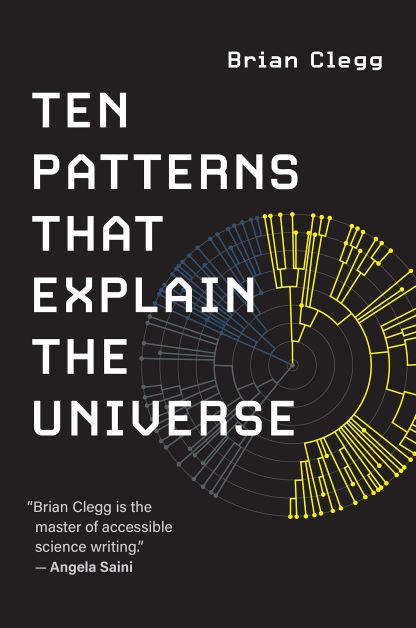Review by E. Asher Balkin & Dane Morey

In his newest book, Ten Patterns That Explain The Universe (MIT press, 2021), a well-known science author presents an implicit argument for the driving forces behind the development and operation of the physical and biological world. Of note, he does not explore the cognitive or social spheres in any way, nor does he suggest what, if any implications, the patterns he does explore might have for thinking systems.
Cycling through his ten patterns: cosmic, background radiation, Minkowski Diagrams, particle patterns, Feynman Diagrams, the periodic table of the elements, weather patterns, number lines, (evolutionary) cladograms, the double-helical structure of DNA, and finally, symmetries, the author introduces his readers to a wide range of physical and basic bio-scientific research offering a brief introduction to the major scientist and thinkers as he does.
Critically, Clegg fails to distinguish between the underlying patterns themselves and the ways in which we typically visualize or represent them. Two of the most stunning examples of this phenomenon deal with Clegg’s treatment of the periodic table of elements and his exploration of cladograms. Rather than exploring the deeper sub-unit interactions, which we now know drive the larger, more emergent patterns we observe, Clegg becomes rightfully fascinated with depictions of those patterns.
Reaffirming his interest in visualizations, in his second chapter—Minkowski Diagrams, Clegg notes that the same principles which permit physicists to plot distortions in three-dimensional space onto two-dimensional plots also allow for the generation of maps that require the translation of three-dimensional objects onto two-dimensional surfaces. Interesting though this fact is, the author misses a critical opportunity to explain the deformities generated and inaccuracies introduced by such methods; even more critically Clegg fails to note to his readers that trans-dimensional plotting is only possible due to a far more foundational mathematical pattern—that of the regularity of integration between the units of the systems under study.
At several points in the text, Clegg seems to graze the deeper question of what it means to be a pattern, how and why patterns form, and the relationship between patterns and the observer, but quickly retreats from addressing the issue. Admittedly the book is meant as an introduction to the topic, not a masterwork or graduate school discussion piece. Clegg attempts to walk a fine line, offering enough foundational information for the novice while providing a deeper insight to those with a deeper background. In the end, the text seems far better suited to the former. More knowledgeable readers will quickly bore of the isolated context of each chapter and the little attention paid to making connections among the patterns he does explore or seeking to recognize even the simplest of meta-patterns (patterns of patterns). In final assessment: an interesting read, but not to be looked to for insight or thoughtfulness.
Clegg, B. (2021). Ten patterns that explain the universe. The MIT Press.
